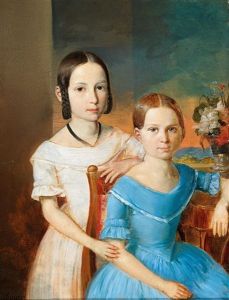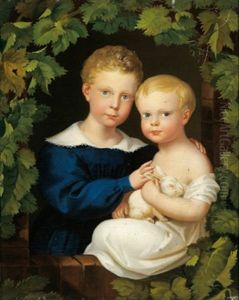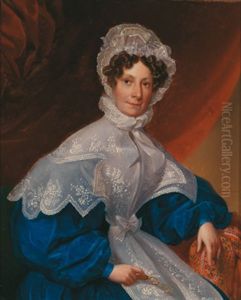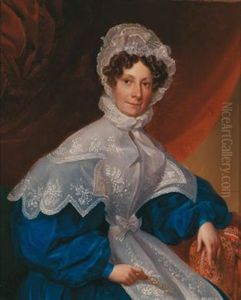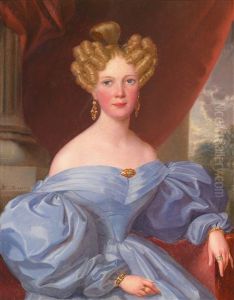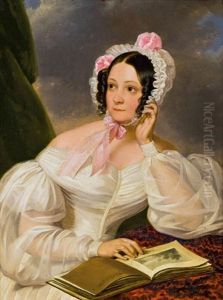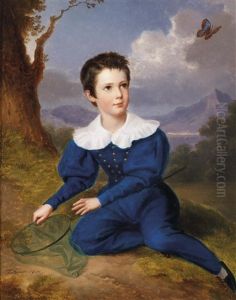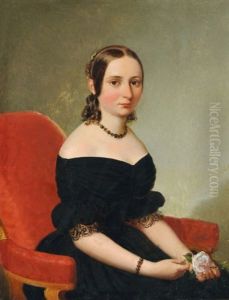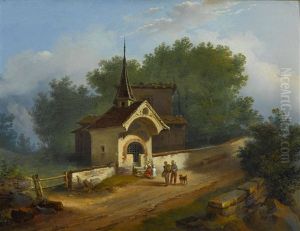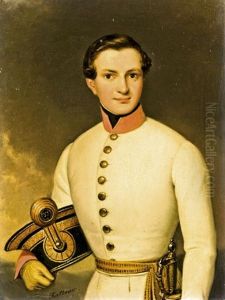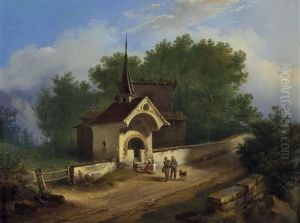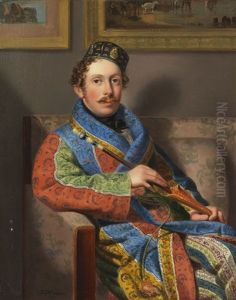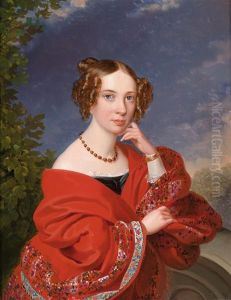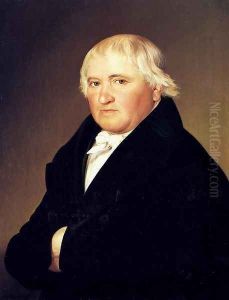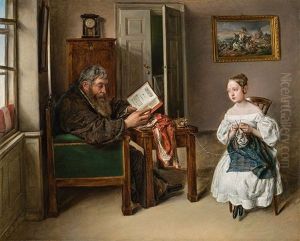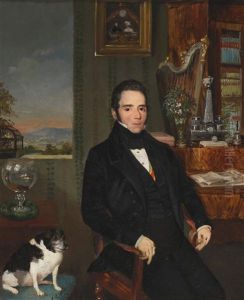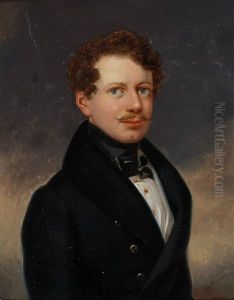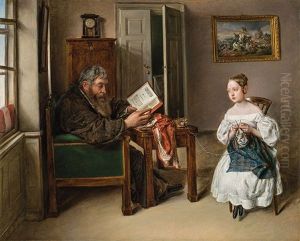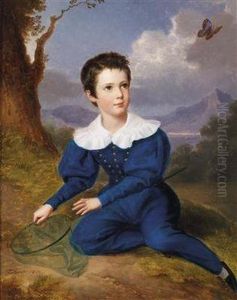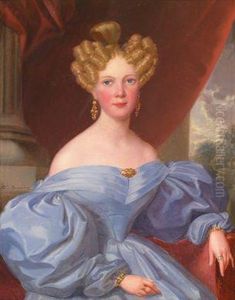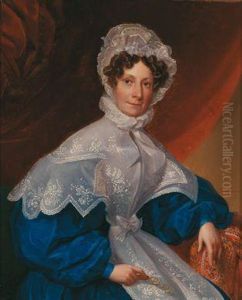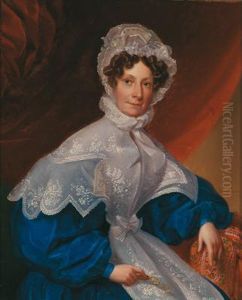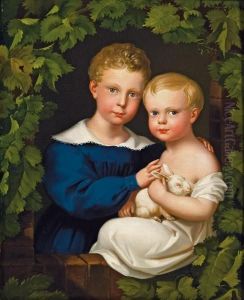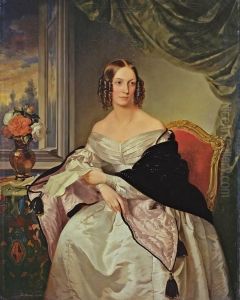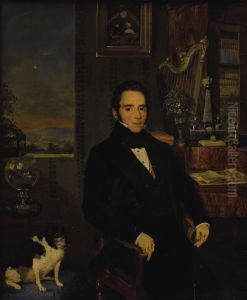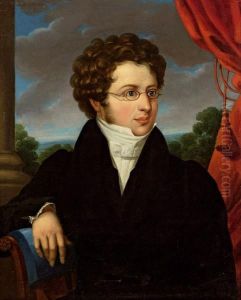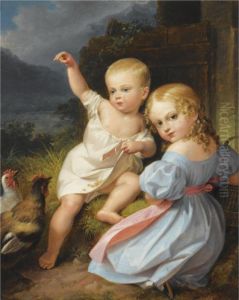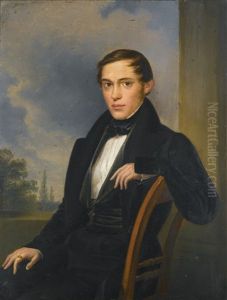Leopold Fertbauer Paintings
Leopold Fertbauer was an Austrian painter primarily known for his portraits and genre scenes. He was born on October 13, 1802, in Vienna, Austria, into an era when European art was witnessing a transition from Neoclassicism to Romanticism. Fertbauer received his artistic training at the Academy of Fine Arts in Vienna, which was a prominent institution for fostering artistic talent in the region.
During his early career, Fertbauer was influenced by the Biedermeier period, a style prevalent in the German-speaking countries of Europe during the years 1815 to 1848. The Biedermeier period was characterized by a sense of order and restraint, and this is evident in Fertbauer's meticulous approach to his work. His portraits often depicted members of the bourgeoisie, the nobility, and the intellectual elite, reflecting the social fabric of the time.
Fertbauer's genre scenes were also highly regarded. These works typically illustrated the everyday life of people, capturing moments of intimacy, social gatherings, or individuals engaged in daily tasks. His attention to detail and ability to convey the textures of fabrics and materials brought a sense of realism to his paintings that was appreciated by his contemporaries.
Throughout his career, Leopold Fertbauer received several commissions for portraits from the Austrian imperial family and other notable figures in society, which solidified his reputation as a skilled portraitist. He was also known to have been a teacher, sharing his knowledge and techniques with aspiring artists of the time.
Despite his success as a painter, Fertbauer’s work is not as widely known today compared to some of his contemporaries. Nevertheless, his contributions to Austrian art in the 19th century remain significant, and his paintings can be found in various art collections and museums across Austria and Europe.
Leopold Fertbauer passed away on August 15, 1875, in Vienna. His legacy is preserved through his artworks, which continue to be studied and admired for their representation of the Biedermeier style and their insight into the societal structures of early to mid-19th century Austria.
